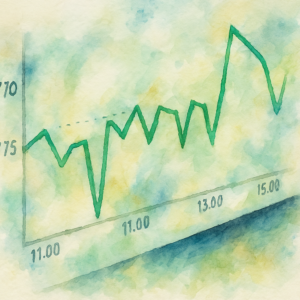Improve your French listening comprehension with this clip form the Inner French podcast. This clip is 56 words in 27 seconds, now blisteringly fast, but still a challenge.
Take the quiz, join the conversation.
Did you find this one challenging or easy? Did you hear something diffferent? What surprised you? What levels did you complete? Comment below and share what’s opening up for you with this quiz.
This clip is from the Inner French podcast Episode 001. Listen and fill in what you hear below. Read more and find a translation below. Find the full podcast here.
Press play and take the transcription quiz to practice your French listening comprehension.
(You can use the ⋮ to adjust playback speed)
The above audio sample and transcription is from the Inner French podcast episode 001. We do not own the content. Listen to the entire episode here.
There are many
Hugo is absolutely right. There are many ways to practice and learn French. I have no idea what the right one is, I only know for sure that a combination approach is necessary. Like Hugo, I agree with listening comprehension as being essential.
This podcast, from Hugo at Inner French, really got me, as I mentioned yesterday about his whole philosophy. I am excited to use this podcast, especially this episode about language learning, on the site. I listened to the whole thing once, and could follow along with transcript. I’m excited to try this practicing clips without the transcript.
Why change gears?
When it comes to learning a new language, it’s important to be exposed to a variety of speech styles and speeds. This can help you become more familiar with the rhythm and sound of the language, as well as develop your listening skills and comprehension.
Listening to slow-spoken French can certainly be beneficial, especially for beginners. It can help you understand the language more easily, as you’ll have more time to process what you’re hearing. Additionally, slow speech can be easier to follow, and it can also help you improve your pronunciation and get a better sense of the rhythm of the language.
However, relying solely on slow-spoken French might not be the best approach, as real-life conversation can be much faster. To get a more comprehensive understanding of the language, it’s also a good idea to listen to native speakers speaking at a normal pace. This can help you get used to the speed at which French is typically spoken, and can also help you develop your ability to understand spoken French in real-life situations.
In conclusion, both slow and fast-spoken French can be useful for language learners. While slow speech can help you get started and improve your pronunciation, listening to native speakers speaking at a normal pace can help you become more proficient in the language and develop your ability to understand spoken French in real-life situations.
Ultimately, I do want to get to the level of working through Transfert and Manger episodes, but for now, this seems more my speed.
What do you think of this podcast choice? I’m open to any and all feedback, as always. Let me know.
The snippet in English
Find a translation of this snippet here, how much of this did you hear?
Il y a plusieurs profils de personnes qui apprennent le français, par exemple les débutants. Pour les débutants, il y a plein d’exercices sur internet, de livres, etc. Et pour les personnes qui ont déjà un niveau avancé, elles peuvent tout simplement lire, regarder, écouter, tous les médias français parce qu’elles sont capables de les comprendre.
There are several profiles of people who learn French, for example beginners. For beginners, there are plenty of exercises on the internet, books, etc. And for people who already have an advanced level, they can simply read, watch, listen, all the French media because they are able to understand them.
The above translation from Deepl. Source
What does “il y a plusieurs” mean?
Certainly! “Il y a plusieurs” is a French expression that translates to “there are several” or “there are many” in English. It’s a formal way of expressing the idea of quantity, and is typically used in more professional or academic settings.
Here are a few examples of how you might use “il y a plusieurs” in a sentence:
- Il y a plusieurs livres sur cette étagère. (There are several books on this shelf.)
- Il y a plusieurs facteurs qui influencent le marché. (There are several factors that influence the market.)
- Il y a plusieurs solutions à ce problème. (There are several solutions to this problem.)
It’s important to note that “il y a plusieurs” is a formal expression, and should be used with caution in casual or informal settings. In those cases, you might prefer to use a more informal expression like “il y a beaucoup” or “il y a pas mal”.
How does it differ from “il y a plein”?
So, “il y a plein” and “il y a plusieurs” are both ways to say “there are a lot of” in French. Basically, they’re used to express that there’s a lot of something.
The difference between them is the level of formality. “Il y a plein” is more casual and informal, you would use it with friends or in a relaxed setting. “Il y a plusieurs”, on the other hand, is more formal and would be more appropriate for, say, a business meeting or in a more professional context.
In terms of misunderstandings, it’s unlikely that these two expressions would cause any real confusion. People would probably still understand what you mean even if you use the wrong one in the wrong situation. However, it’s always good to be aware of the level of formality you’re using in a given situation, and to choose your words accordingly.
What did you love about this?
Comment below with your feedback! Tells us what you think. Send a note or leave a comment below. We appreciate the feedback. Also, we’re always looking for partners to build this site and grow the content available.









